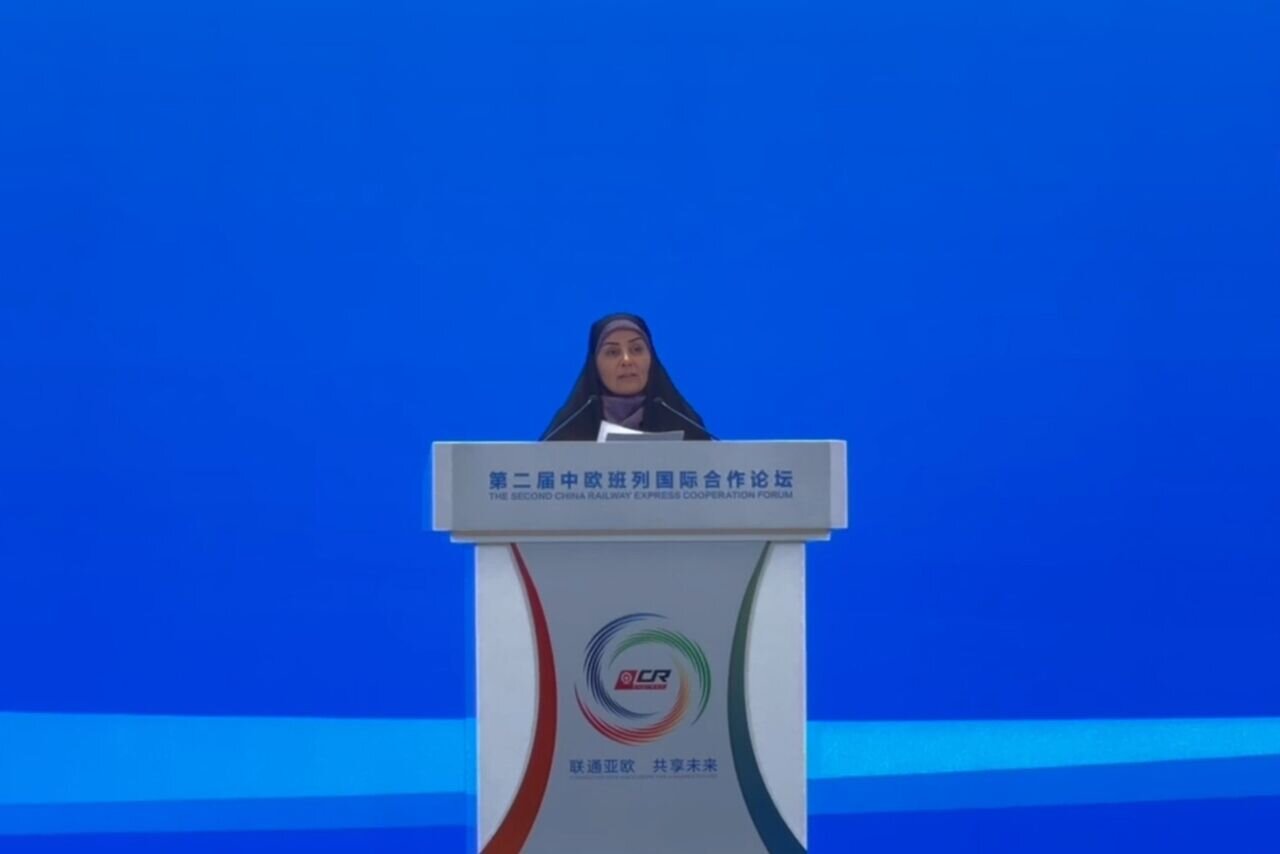Iran positions itself as central bridge for China–Europe rail corridor

TEHRAN – Iran’s transport minister said progress on the strategic Marand–Cheshmeh-Soraya railway is accelerating, paving the way for a continuous China–Europe rail route that would place Iran at the heart of a major new transit corridor.
During her visit to China for the second China–Europe Rail Connectivity Forum, Minister Farzaneh Sadegh outlined Iran’s long-term strategy to become a key connector between Asian and European markets.
She said efficient rail transport is essential for sustainable development, regional integration and trade expansion, noting that rail systems remove physical bottlenecks, simplify procedures and reduce logistics costs for businesses across the region.
Sadegh added that strengthening Iran’s east–west transit capacity aligns with the Belt and Road Initiative and remains a firm priority for the ministry. Efforts include upgrading infrastructure, eliminating chokepoints, modernizing border logistics and coordinating with neighboring countries through bilateral and multilateral agreements.
The minister highlighted the Marand–Cheshmeh-Soraya line as a core component of Iran’s transit strategy. The route will connect Iran’s rail network to Turkey, creating a continuous corridor linking China to Europe through Iranian territory. Once completed, she said, the southern branch of the historic Silk Road will become a modern, end-to-end rail system enabling faster, low-cost freight movement with minimal stops.
Sadegh emphasized that Iran’s geography, infrastructure and human capacity make it uniquely positioned to serve as the principal gateway between East and West. By connecting Asian supply hubs to European markets, she said, the corridor will support trade expansion, increase regional competitiveness and contribute to economic development across participating countries.
Iran’s readiness to support joint regional transit goals
Sadegh stated that Iran is ready to share all available logistical capabilities with regional partners to advance the joint objective of developing China–Europe rail transit. Coordinated regional actions, she added, can generate substantial benefits for trade, industry and regional connectivity, building a more resilient and efficient transport network across Eurasia.
She also thanked China for hosting the forum in Xi’an and expressed hope that the platform would help participating countries consolidate practical steps toward enhancing rail cooperation.
Progress on electric rail link and fleet expansion
Speaking to reporters on the sidelines of the forum, Sadegh confirmed that early discussions have taken place on launching an electric rail service between Sarakhs and Cheshmeh-Soraya as part of the China–Europe network. She said Iran’s strategic location and access to European gateways provide major advantages for developing the route.
The minister noted that beyond track construction, Iran faces a significant shortage of rolling stock—particularly locomotives—and intends to expand its fleet through new partnerships. She said the meetings in China, including technical site visits, would support progress in both infrastructure development and equipment supply.
The second China–Europe Rail Connectivity Forum will convene Tuesday in Xi’an, bringing together government officials, companies and rail-sector representatives from countries along the route. The minister is accompanied by the head of Iranian Railways and members of parliament’s civil engineering committee.
EF/MA
Leave a Comment